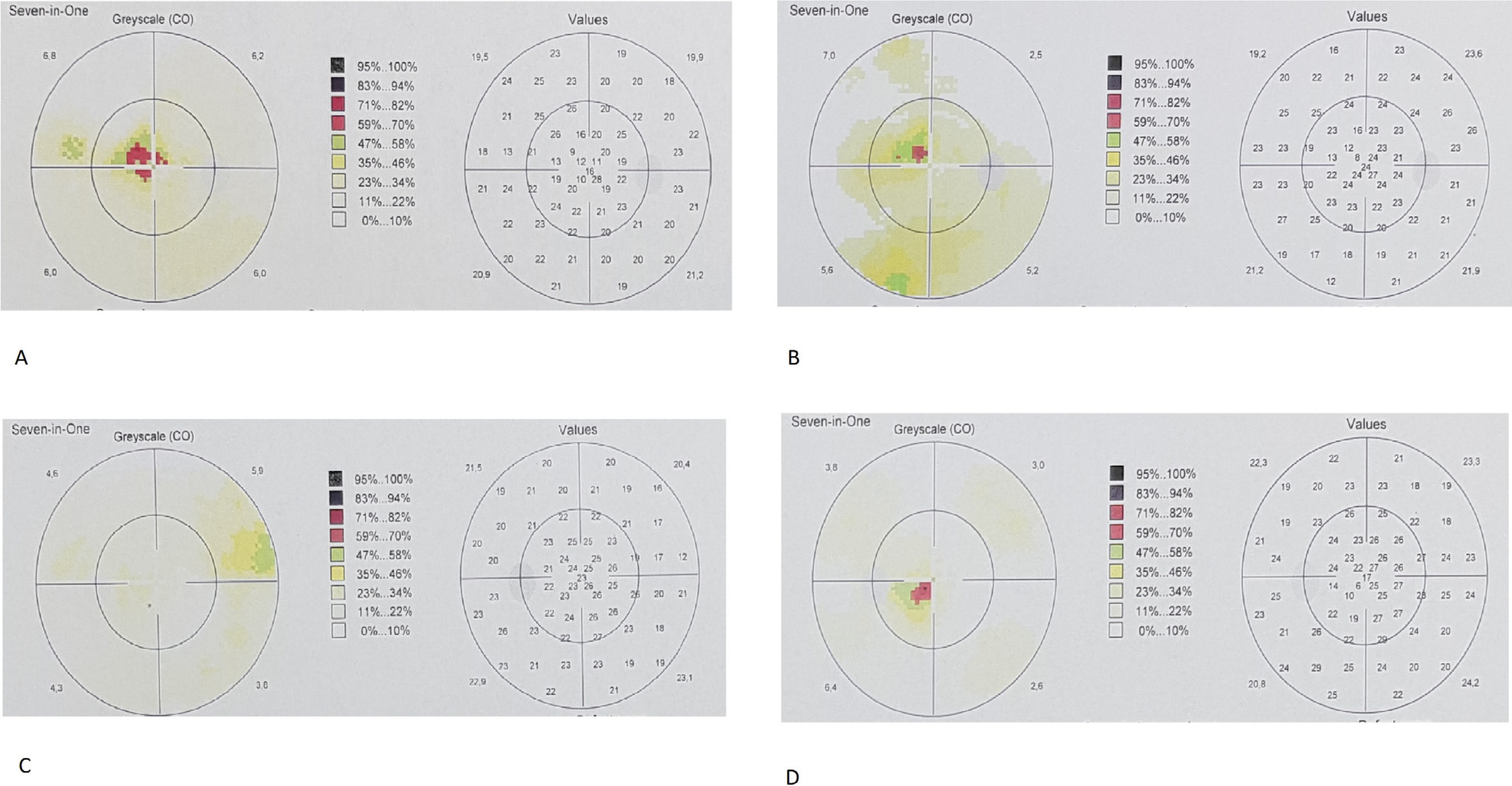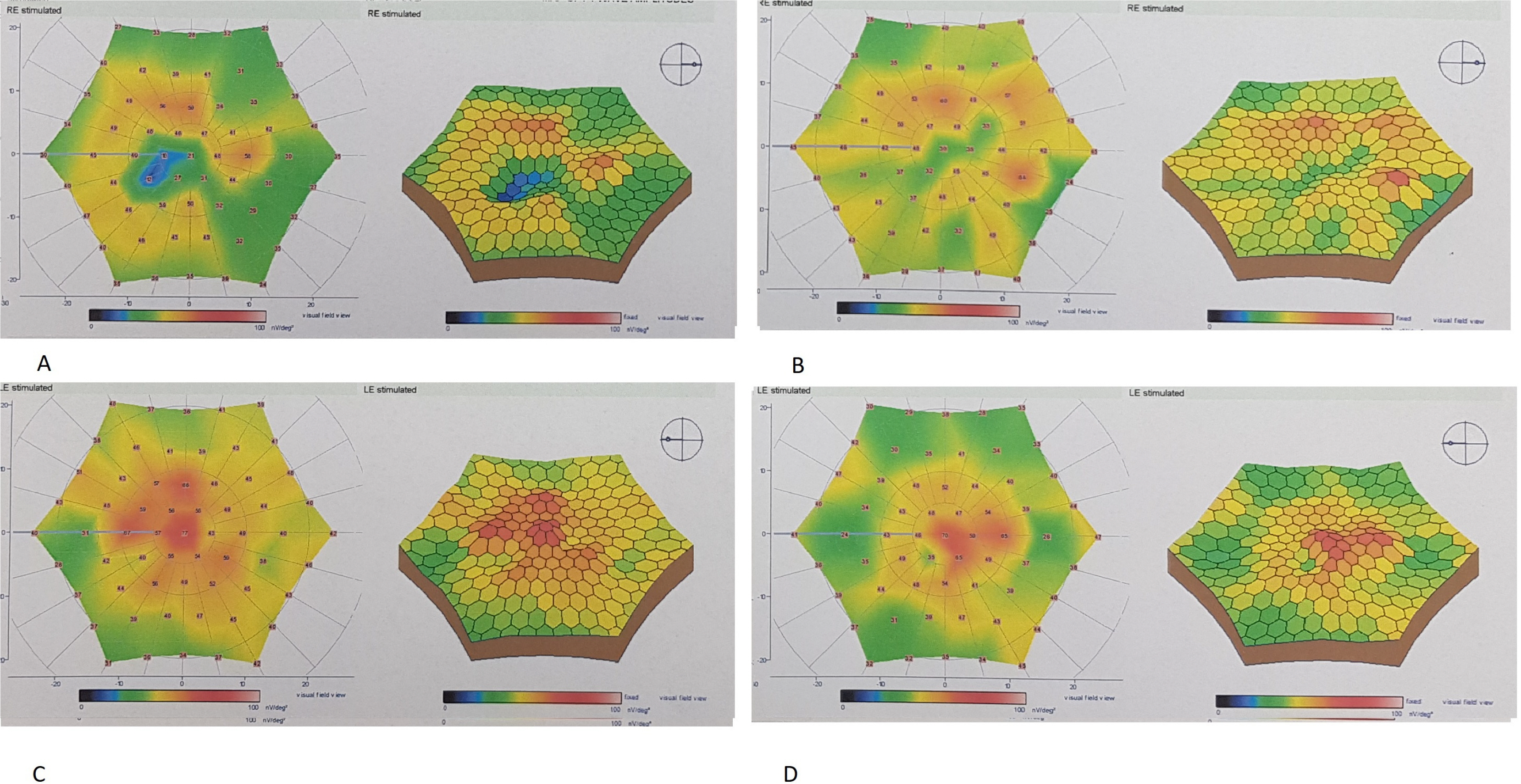2. Kahraman NS, Öner A. 2019; Stem cell treatment in degenerative retinal and optic nerve diseases. Trak Univ J Nat Sci. 20:11–16.
4. Kalbermatten DF, Schaakxs D, Kingham PJ, Wiberg M. 2011; Neurotrophic activity of human adipose stem cells isolated from deep and superficial layers of abdominal fat. Cell Tissue Res. 344:251–260. DOI:
10.1007/s00441-011-1142-5. PMID:
21400216.

5. Mead B, Logan A, Berry M, Leadbeater W, Scheven BA. 2014; Paracrine-mediated neuroprotection and neuritogenesis of axotomised retinal ganglion cells by human dental pulp stem cells: comparison with human bone marrow and adipose-derived mesenchymal stem cells. PLoS One. 9:e109305. DOI:
10.1371/journal.pone.0109305. PMID:
25290916. PMCID:
PMC4188599.

6. Tang Z, Zhang Y, Wang Y, Zhang D, Shen B, Luo M, Gu P. 2017; Progress of stem/progenitor cell-based therapy for retinal degeneration. J Transl Med. 15:99. DOI:
10.1186/s12967-017-1183-y. PMID:
28486987. PMCID:
PMC5424366.

7. Khan M, Agarwal K, Loutfi M, Kamal A. 2014; Present and possible therapies for age-related macular degeneration. ISRN Ophthalmol. 2014:608390. DOI:
10.1155/2014/608390. PMID:
25097787. PMCID:
PMC4009180.

8. Fujinami K, Lois N, Davidson AE, Mackay DS, Hogg CR, Stone EM, Tsunoda K, Tsubota K, Bunce C, Robson AG, Moore AT, Webster AR, Holder GE, Michaelides M. 2013; A longitudinal study of stargardt disease: clinical and electrophysiologic assessment, progression, and genotype correla-tions. Am J Ophthalmol. 155:1075–1088.e13. DOI:
10.1016/j.ajo.2013.01.018. PMID:
23499370.

9. Hood DC, Bach M, Brigell M, Keating D, Kondo M, Lyons JS, Marmor MF, McCulloch DL, Palmowski-Wolfe AM. 2012; ISCEV standard for clinical multifocal electroretinography (mfERG) (2011 edition). Doc Ophthalmol. 124:1–13. DOI:
10.1007/s10633-011-9296-8. PMID:
22038576. PMCID:
PMC4466109.

10. Limoli PG, Vingolo EM, Morales MU, Nebbioso M, Limoli C. 2014; Preliminary study on electrophysiological changes after cellular autograft in age-related macular degeneration. Medicine (Baltimore). 93:e355. DOI:
10.1097/MD.0000000000000355. PMID:
25546695. PMCID:
PMC4602619.

11. Oner A, Gonen ZB, Sinim N, Cetin M, Ozkul Y. 2016; Subretinal adipose tissue-derived mesenchymal stem cell implantation in advanced stage retinitis pigmentosa: a phase I clinical safety study. Stem Cell Res Ther. 7:178. DOI:
10.1186/s13287-016-0432-y. PMID:
27906070. PMCID:
PMC5134260.

12. Kahraman NS, Sevim DG, Öner A. 2019; Cross-validation of the Turkish version of the 28-item impact of vision impairment profile test. Open J Ophthalmol. 9:194–202. DOI:
10.4236/ojoph.2019.94021.

13. Oner A, Gonen ZB, Sevim DG, Sinim N, Cetin M, Ozkul Y. 2019; First-year results of subretinal mesenchymal stem cell implantation in severe retinitis pigmentosa. J Stem Cell Res Ther. 9:454.
14. Limoli PG, Vingolo EM, Limoli C, Scalinci SZ, Nebbioso M. 2018; Regenerative therapy by suprachoroidal cell autograft in dry age-related macular degeneration: preliminary in vivo report. J Vis Exp. (132):56469. DOI:
10.3791/56469. PMID:
29553543. PMCID:
PMC5912396.

15. Habot-Wilner Z, Noronha G, Wykoff CC. 2019; Suprachoroidally injected pharmacological agents for the treatment of chorio-retinal diseases: a targeted approach. Acta Ophthalmol. 97:460–472. DOI:
10.1111/aos.14042. PMID:
30702218.

16. Oner A, Gonen ZB, Sevim DG, Smim Kahraman N, Unlu M. 2018; Suprachoroidal adipose tissue-derived mesenchymal stem cell implantation in patients with dry-type age-related macular degeneration and Stargardt's macular dystrophy: 6-month follow-up results of a phase 2 study. Cell Reprogram. 20:329–336. DOI:
10.1089/cell.2018.0045. PMID:
31251672.

17. Thanos C, Emerich D. 2005; Delivery of neurotrophic factors and therapeutic proteins for retinal diseases. Expert Opin Biol Ther. 5:1443–1452. DOI:
10.1517/14712598.5.11.1443. PMID:
16255648.

18. Schäffler A, Büchler C. 2007; Concise review: adipose tissue-derived stromal cells--basic and clinical implications for novel cell-based therapies. Stem Cells. 25:818–827. DOI:
10.1634/stemcells.2006-0589. PMID:
17420225.

19. Tischler M. 2002; Platelet rich plasma. The use of autologous growth factors to enhance bone and soft tissue grafts. N Y State Dent J. 68:22–24. PMID:
11989332.
20. Kahraman NS, Oner A. 2020; Subtenon injection of autologous platelet-rich plasma in retinitis pigmentosa: is it a new therapeutic option? Open J Ophthalmol. 10:77–88. DOI:
10.4236/ojoph.2020.101010.

21. Kamao H, Mandai M, Okamoto S, Sakai N, Suga A, Sugita S, Kiryu J, Takahashi M. 2014; Characterization of human induced pluripotent stem cell-derived retinal pigment epithelium cell sheets aiming for clinical application. Stem Cell Reports. 2:205–218. DOI:
10.1016/j.stemcr.2013.12.007. PMID:
24527394. PMCID:
PMC3923225.

22. Dang Y, Zhang C, Zhu Y. 2015; Stem cell therapies for age-related macular degeneration: the past, present, and future. Clin Interv Aging. 10:255–264. DOI:
10.2147/CIA.S73705. PMID:
25609937. PMCID:
PMC4298283.

23. Limoli PG, Limoli C, Vingolo EM, Scalinci SZ, Nebbioso M. 2016; Cell surgery and growth factors in dry age-related macular degeneration: visual prognosis and morphological study. Oncotarget. 7:46913–46923. DOI:
10.18632/oncotarget.10442. PMID:
27391437. PMCID:
PMC5216913.

24. Limoli PG, Vingolo EM, Limoli C, Nebbioso M. 2019; Stem cell surgery and growth factors in retinitis pigmentosa patients: pilot study after literature review. Biomedicines. 7:94. DOI:
10.3390/biomedicines7040094. PMID:
31801246. PMCID:
PMC6966474.









 PDF
PDF Citation
Citation Print
Print


 XML Download
XML Download